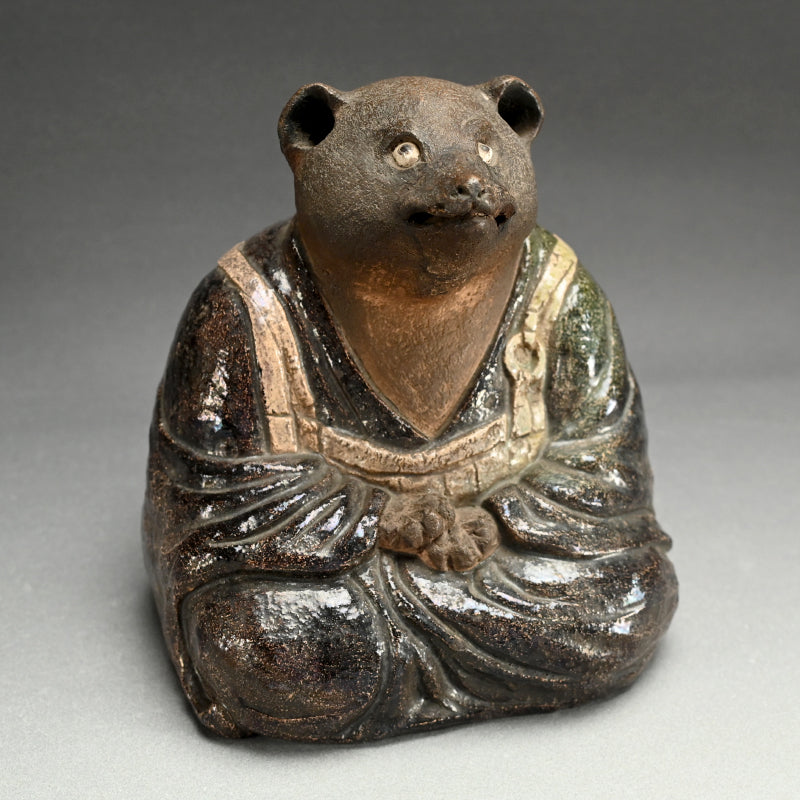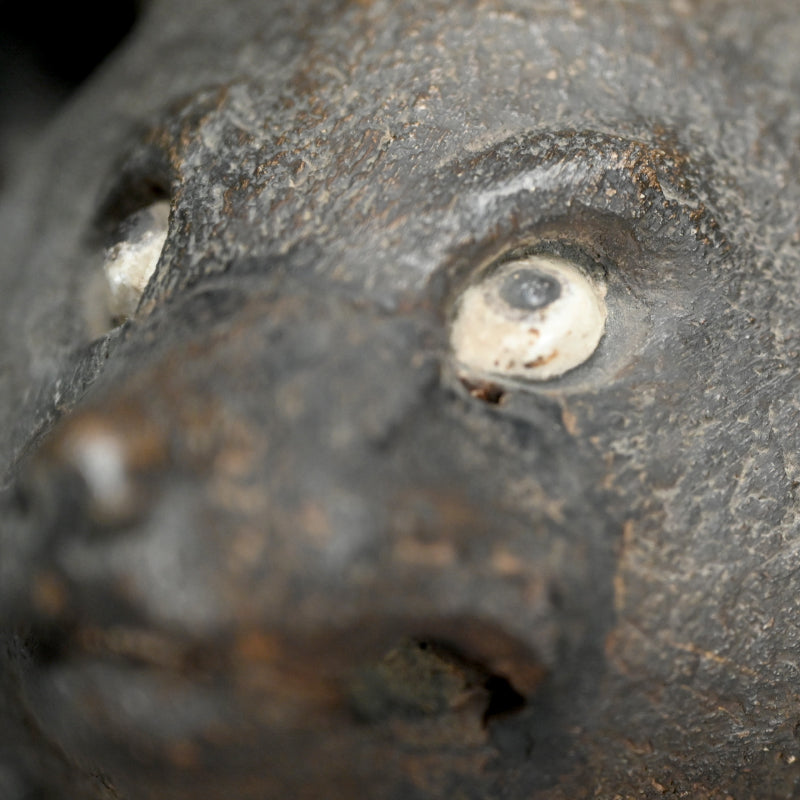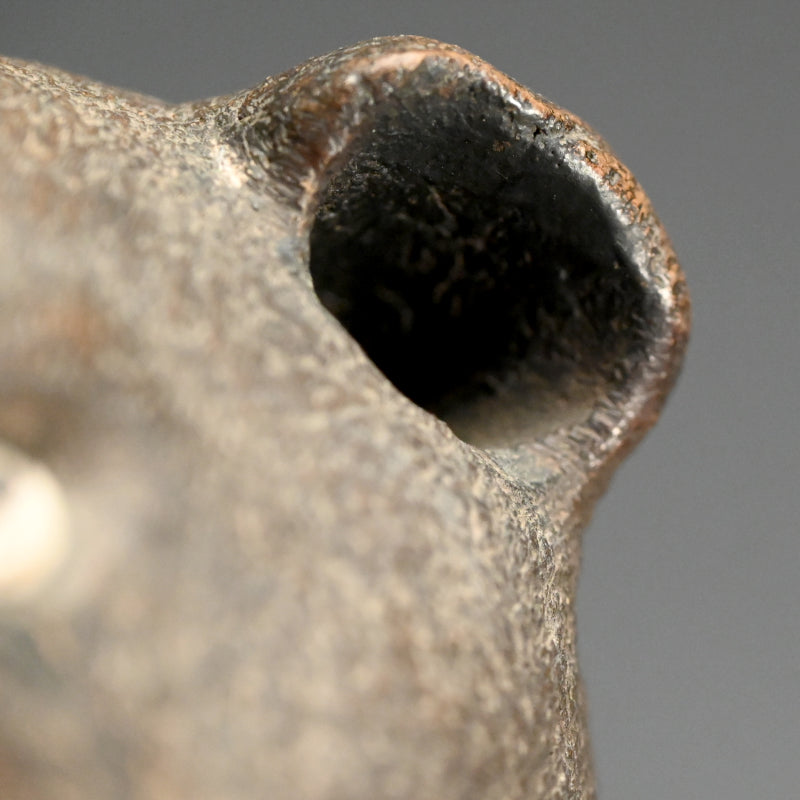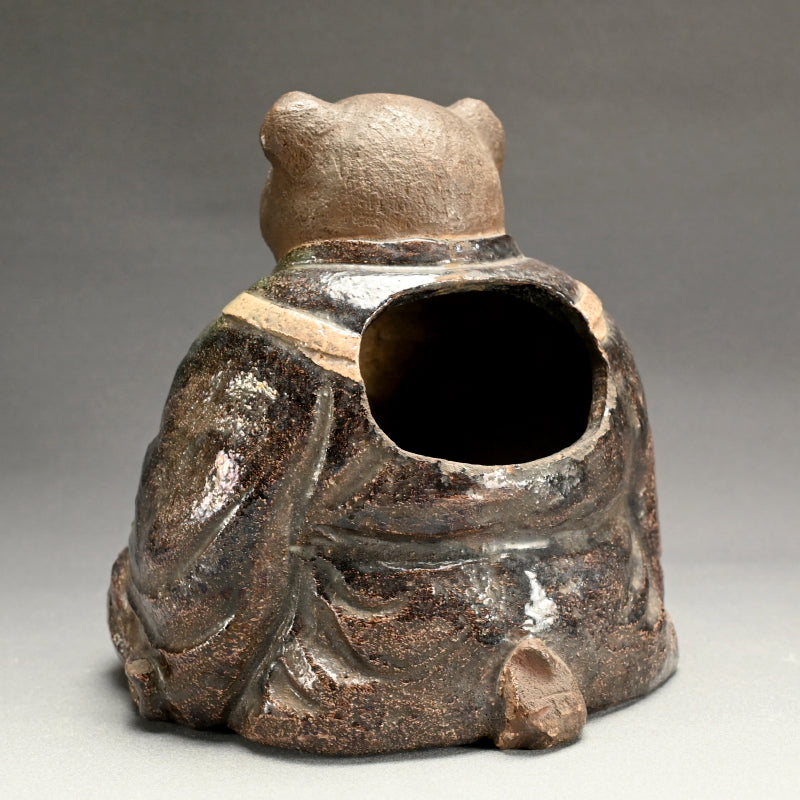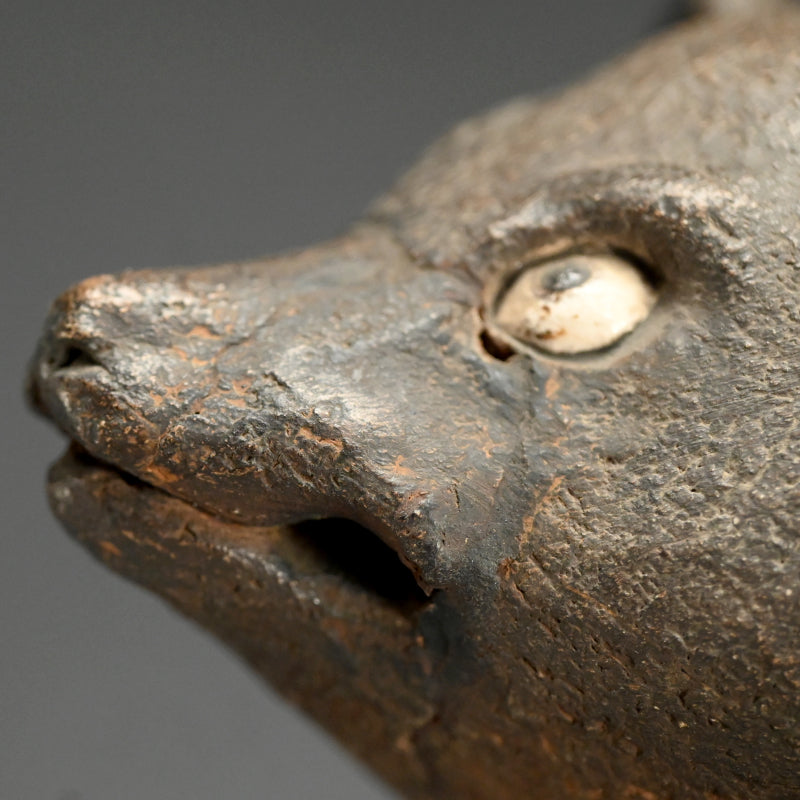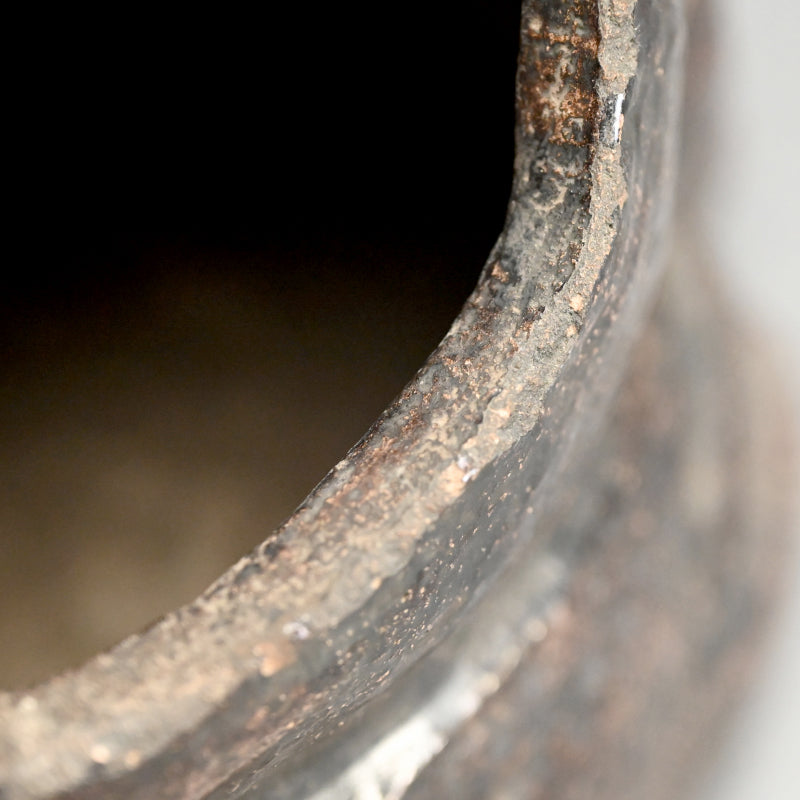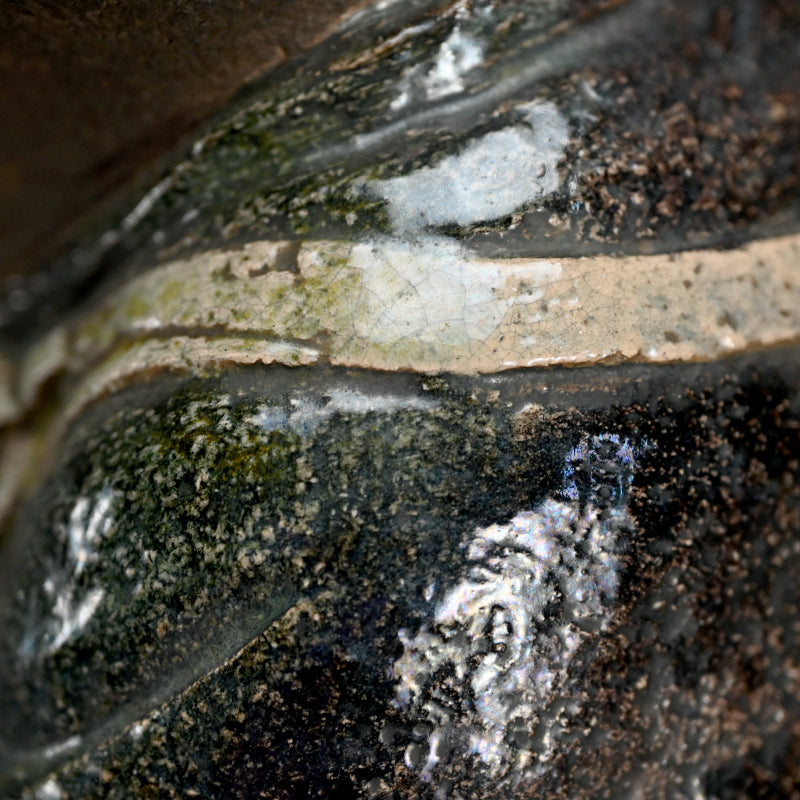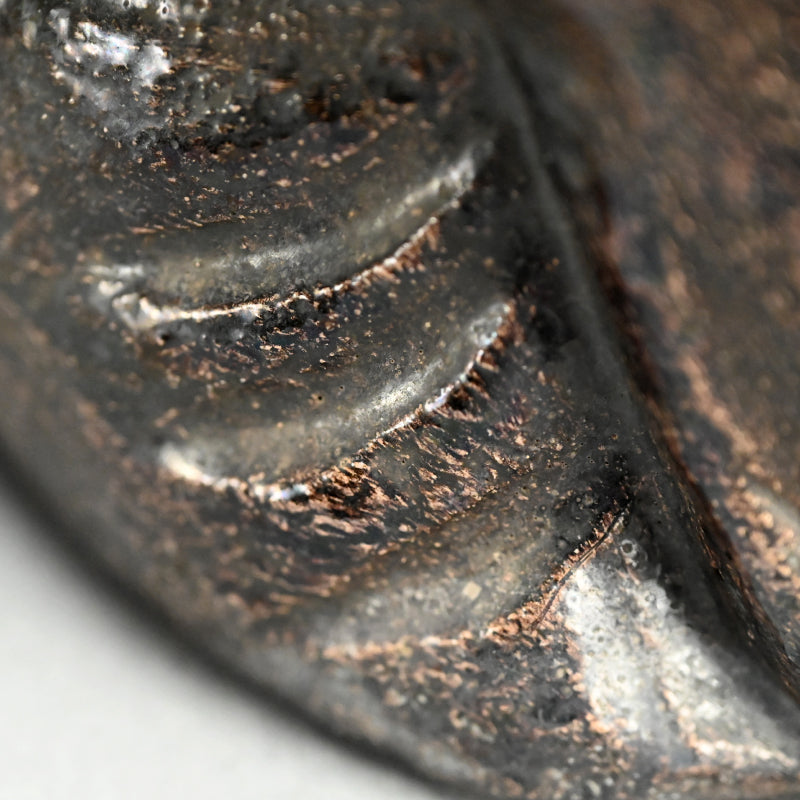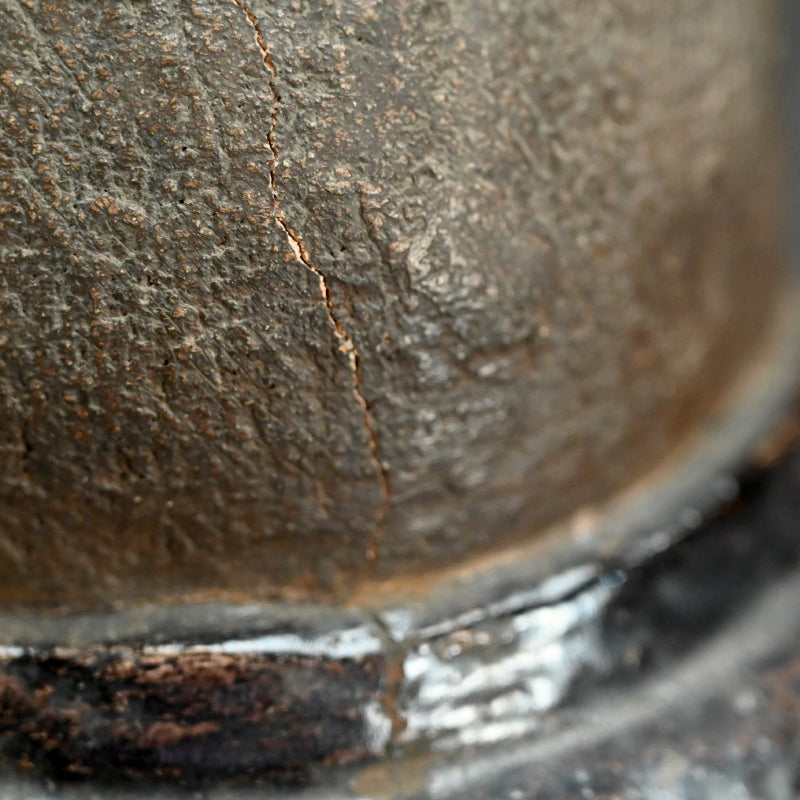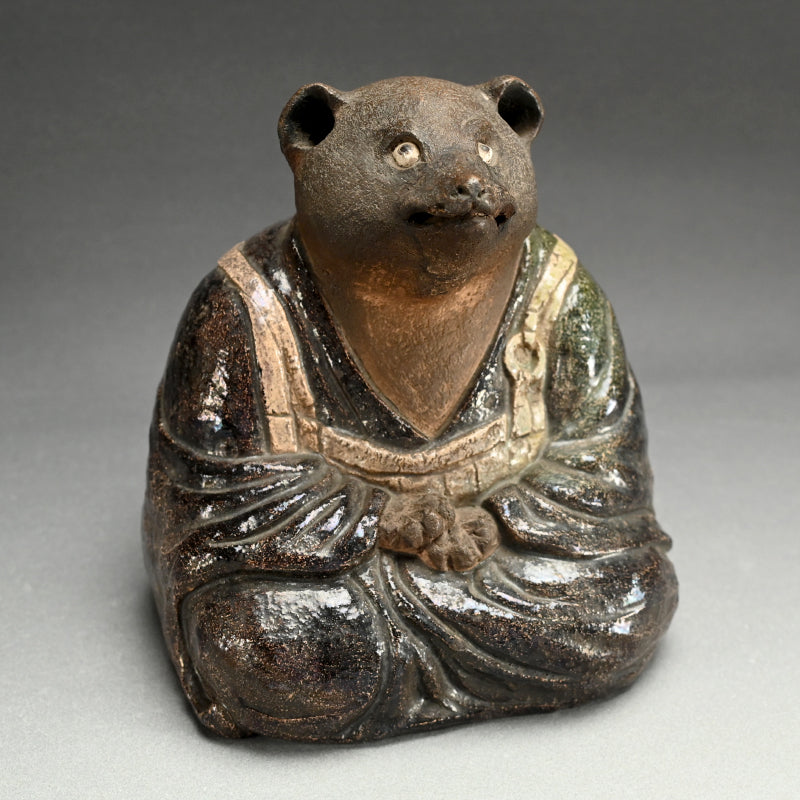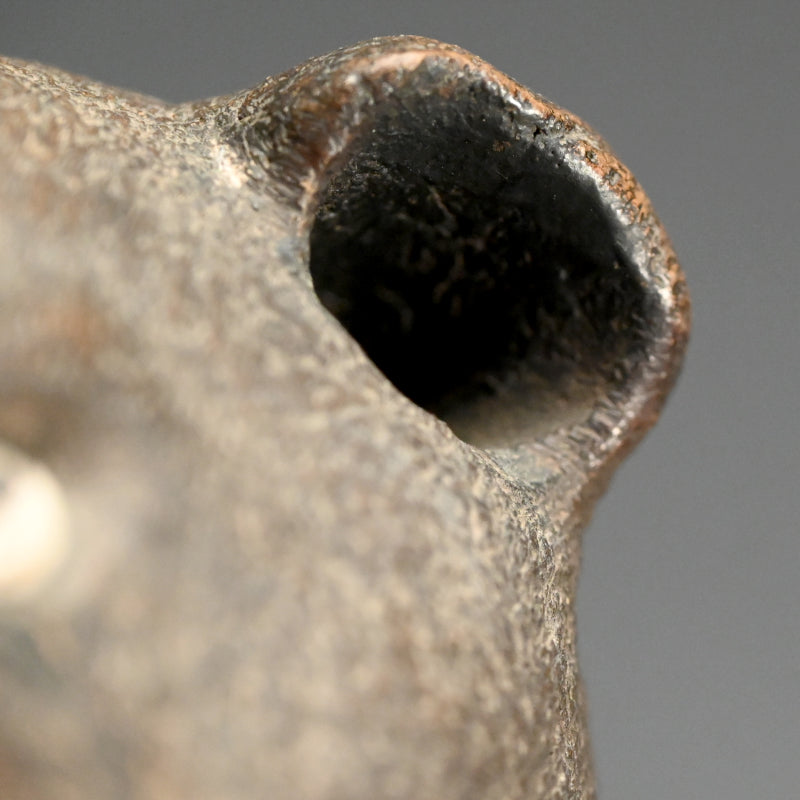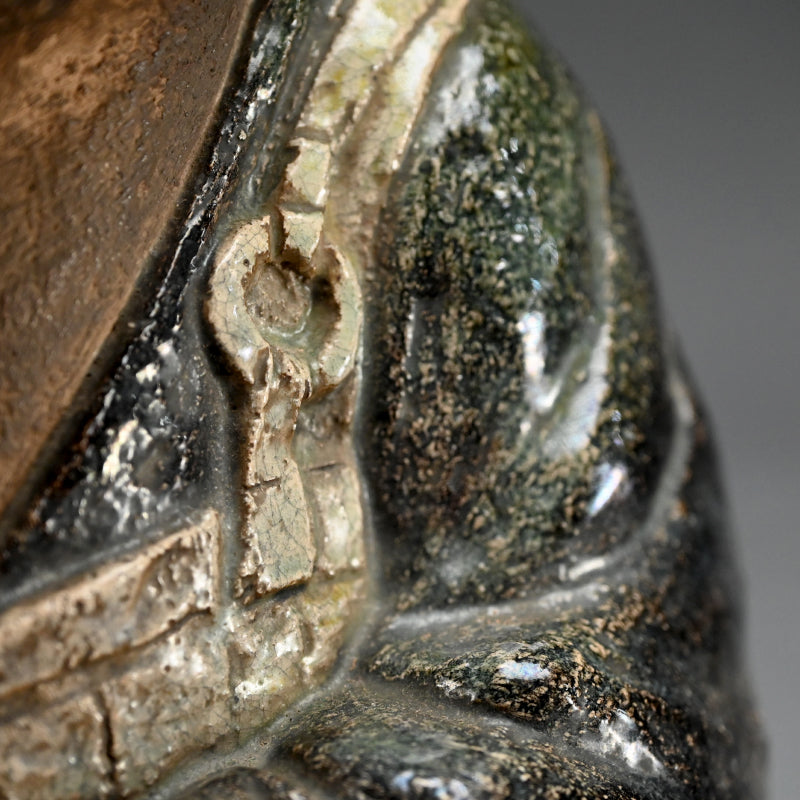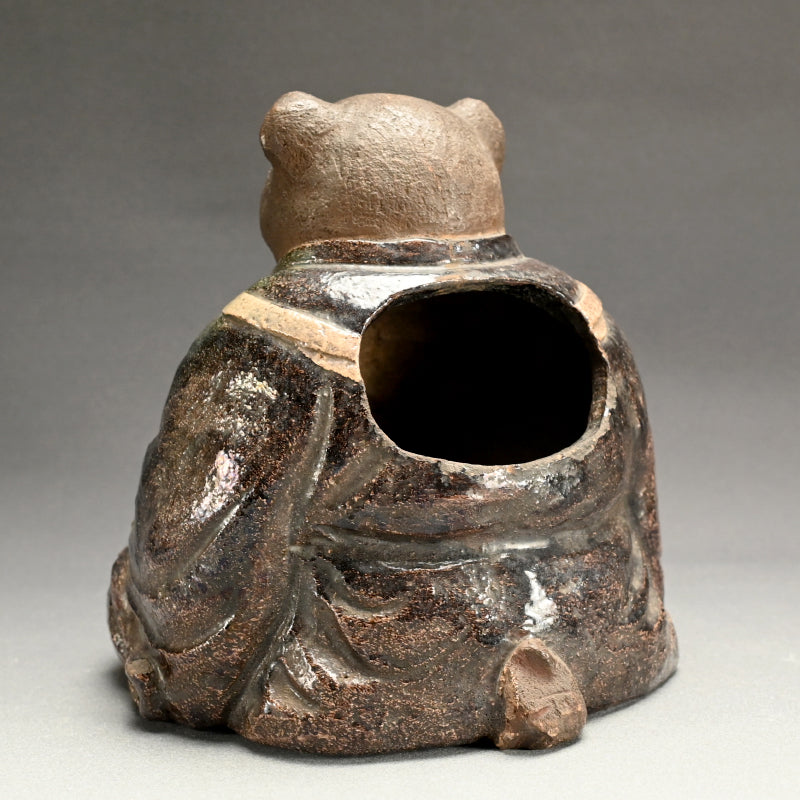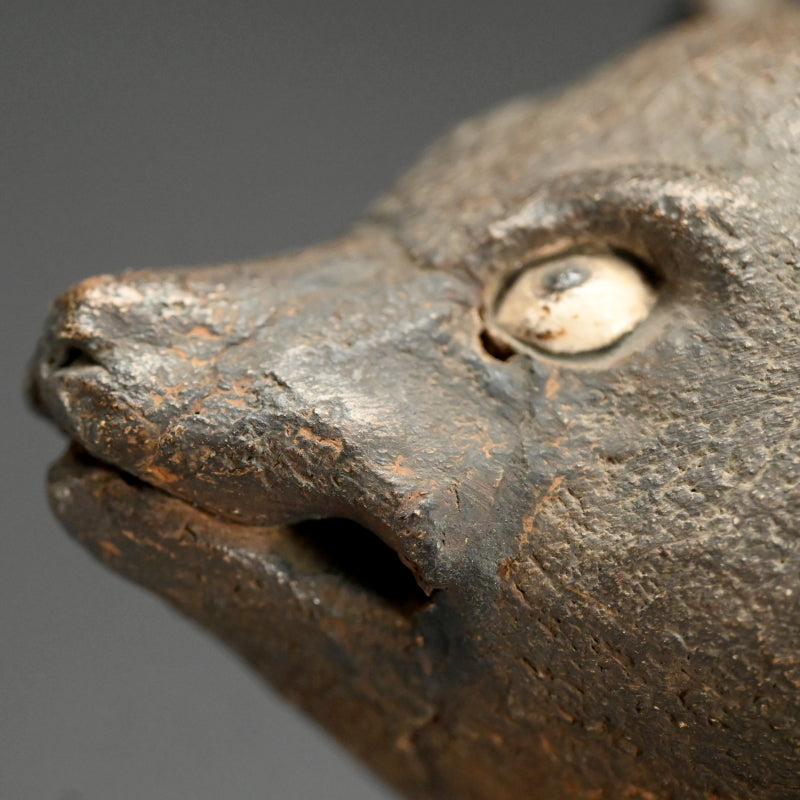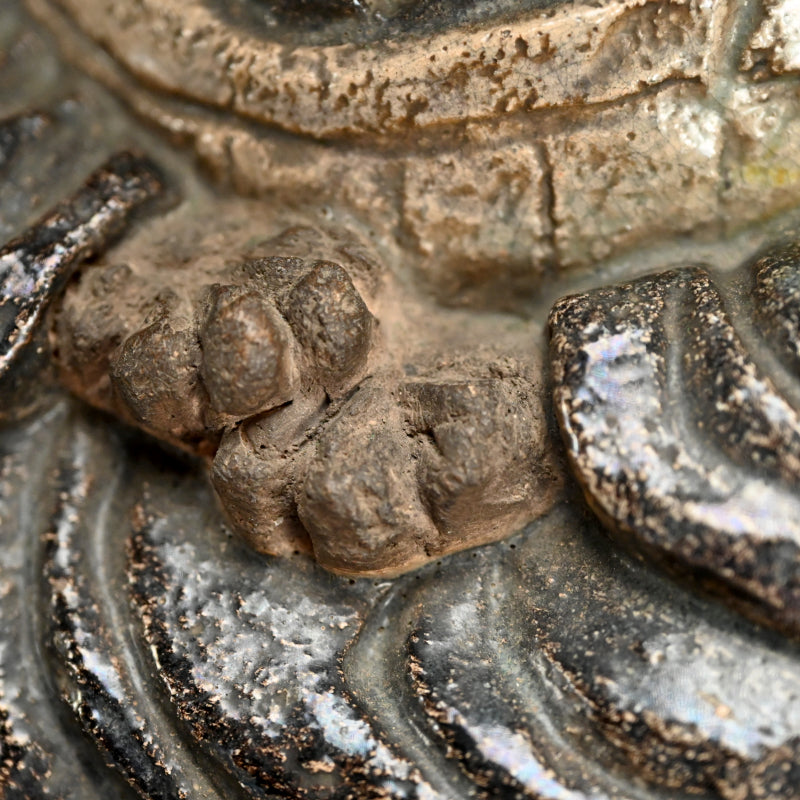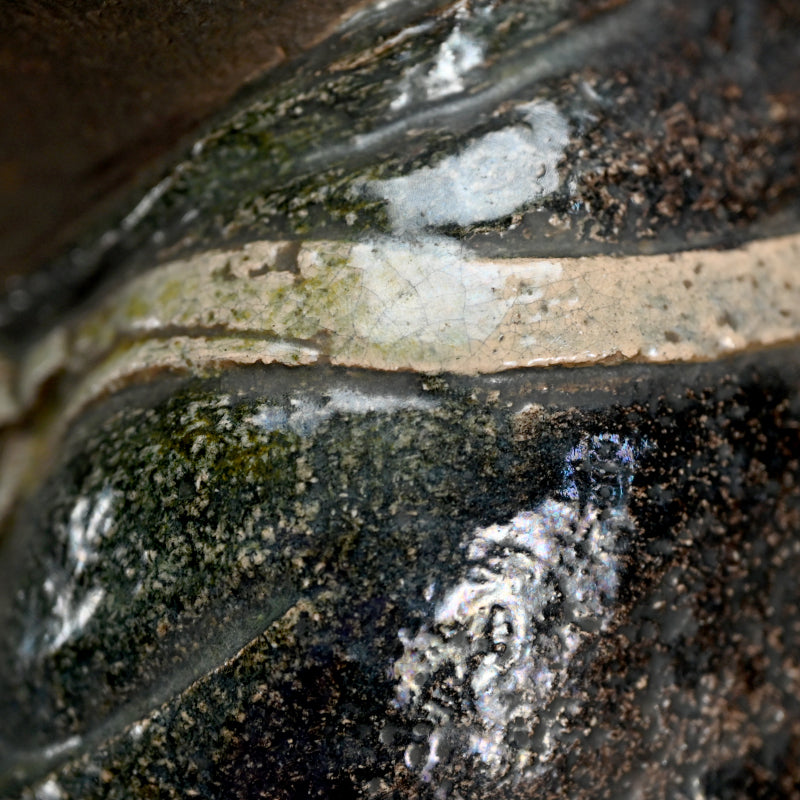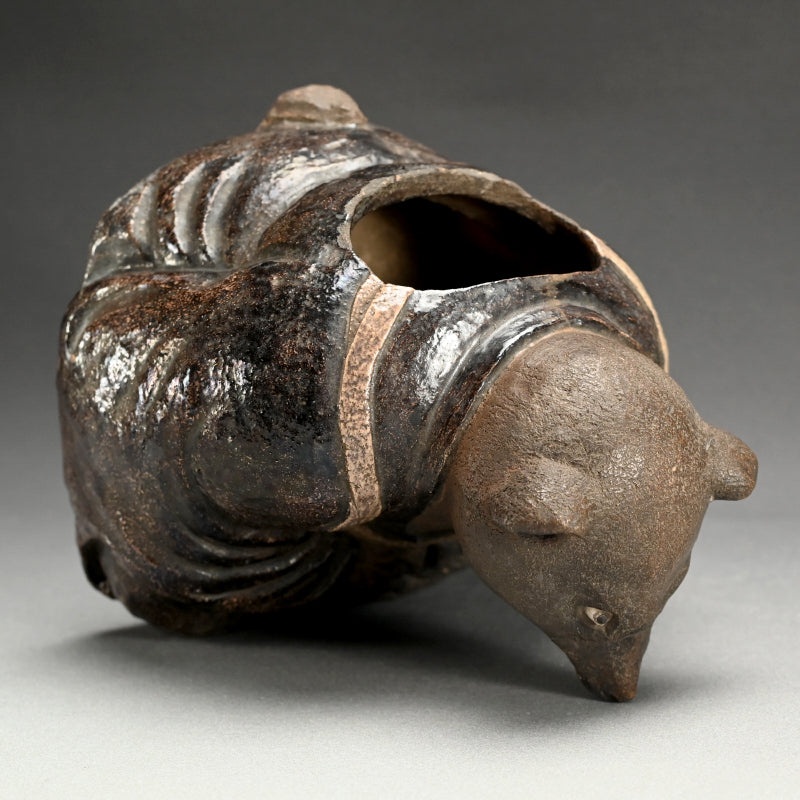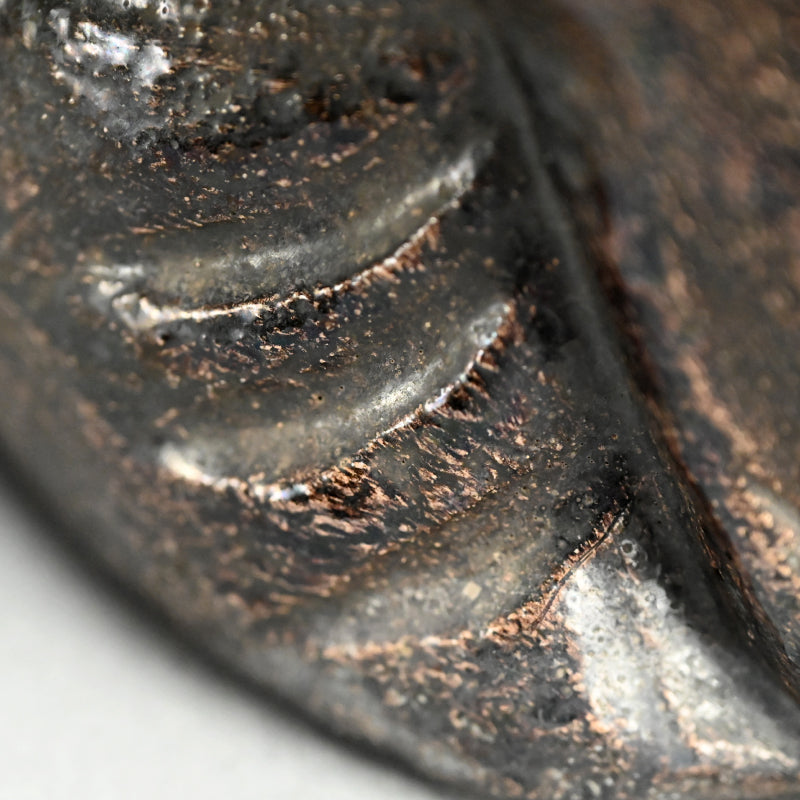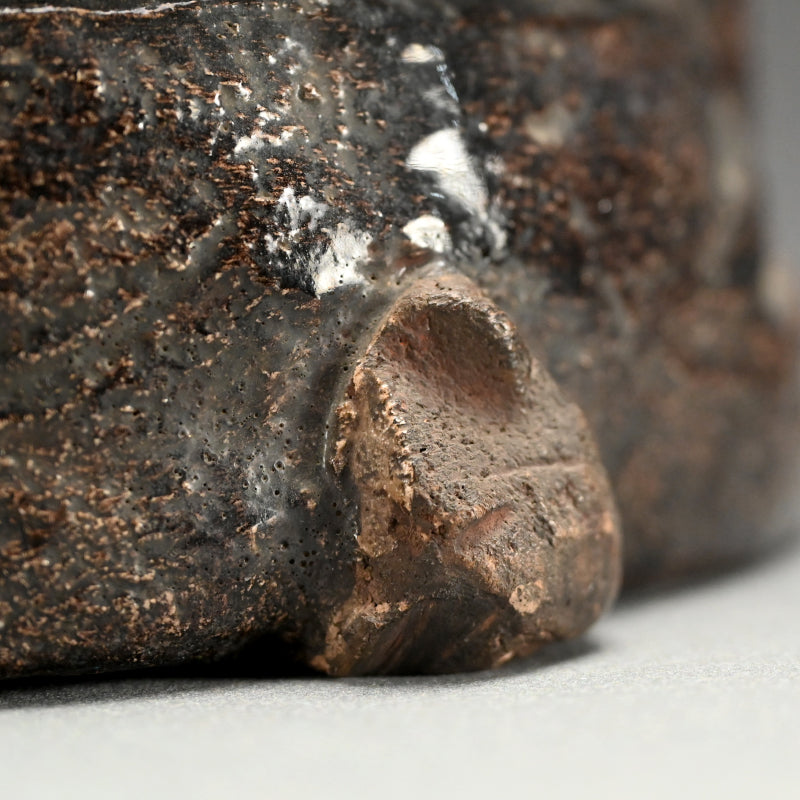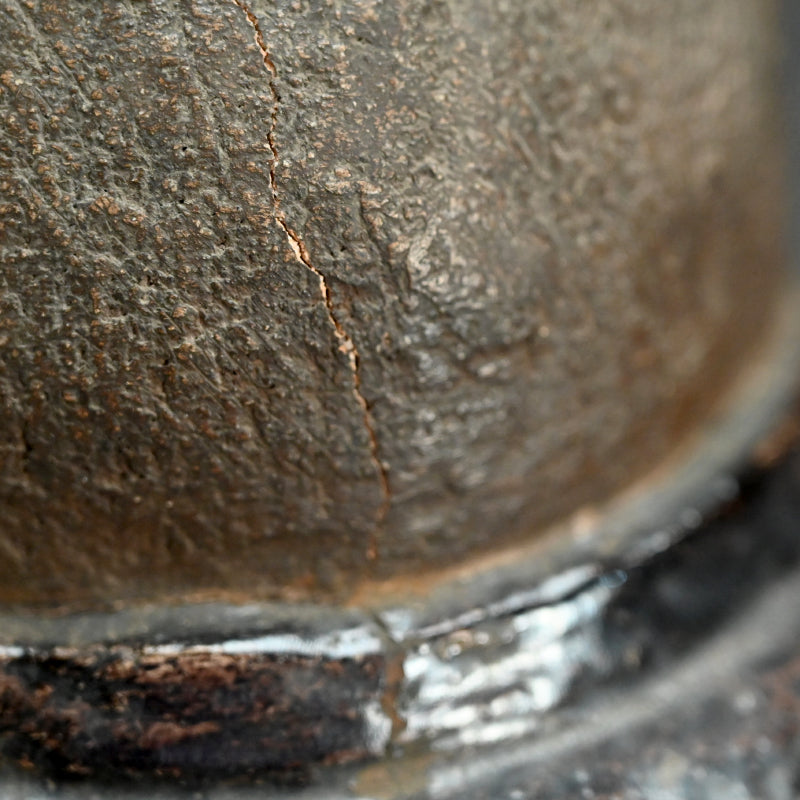Edo p. Figurine by Ninnami Dohachi, Tanuki dressed as Priest
Edo p. Figurine by Ninnami Dohachi, Tanuki dressed as Priest
Item Code: K692
Couldn't load pickup availability
A beautifully sculpted 19th Century image of a mischievous Tanuki dressed in priests robes by Ninnami Dohachi of Kyoto, hands overlapping in a meditative pose dating from the 19th century. Signed on the bottom it measures 24 x 24 x 27 cm (roughly 9-1/2 x 9-1/2 x 10-1/2 inches). There is a firing crack under the right jaw, and in the tail, otherwise is in great condition. It comes enclosed in an age darkened wooden display box.
The Dohachi Kiln was established in Awataguchi by a retainer of Kameyama fief, Takahashi Dohachi I around 1760, and the name Dohachi was brought to the forefront of porcelain and ceramic production by the second generation head of the family who attained an imperial following, and grew to be one of the most famous potters of the Later Edo period to come from Kyoto. Ninnami Dohachi (1783-1855) was born the second son of Takahashi Dohachi I. Following the early death of his older brother he succeeded the family name, opening a kiln in the Gojo-zaka area of Kyoto (at the foot of Kiyomizu temple) in 1814. Well known for research into and perfection of ancient Chinese and Korean forms long held in high esteem in Japan, and at the same time working to expand the family reputation within tea circles. Along with contemporaries Aoki Mokubei and Eiraku Hozen became well known as a master of porcelain as well as Kenzan and Ninsei ware. Over the following decades he would be called to Takamatsu, Satsuma, Kishu and other areas to consult and establish kilns for the Daimyo and Tokugawa families as well as Nishi-Honganji Temple. Ninnami Dohachi II and his son (the future Dohachi III) were invited by the local lord Matsudaira to produce pottery at the Sangama kiln in Sanuki Kuni on the island of Shikoku in 1832. He would return later, agan with his son as well as his apprentice Siefu Yohei, in 1852. The third generation (1811-1879) continued the work of his father, producing an abundance of Sencha tea ware and other porcelain forms, maintaining the highest of standards and ensuring the family place in the annals of Kyoto ceramics well into the Meiji period. Takahashi Dohachi III began to use the title Kachutei Dohachi and was granted the title Hokyo by Ninaji-miya of the Imperial family. He retired to his grandfathers kiln in his later years, giving control to his son the fourth generation Dohachi (1845-1897) who also used the title Kachutei. The fifth generation (1869-1914) was adopted into the family and took head of the kiln in 1897 and was one of the top rated potters of his time, heavily influencing following generations including one of his top students, Ito Tozan. The kiln continues today with the 9th generation. The importance of the Dohachi workshop may be determined by the pair of vases held by the V&A (London) purchased in the 1870s under the orders: that they should 'make an historical collection of porcelain and pottery from the earliest period until the present time, to be formed in such a way as to give fully the history of the art. An exhibition was held at the Suntory Museum in 2014 centering on this artist, and he is also held in the Museum of Fine Arts, Boston and Kyoto National Museum among many, many others.
The tanuki (Japanese raccoon dog) is a significant figure in Japanese folklore, celebrated for its mischievous, shape-shifting abilities and humorous antics. Known for their playful and sometimes morally ambiguous nature, tanuki are often depicted as masters of transformation and disguise, embodying themes of deception, adaptability, and humor. In some folk tales, tanuki disguise themselves as Buddhist nuns or priests, often with humorous or ironic undertones. This imagery blends the sacred with the absurd, highlighting the tanuki's cheeky nature. Disguising as religious figures underscores the tanuki's ability to deceive even in spiritual or solemn contexts. These tales serve as cautionary stories about gullibility and the need for discernment, even in sacred spaces.In tales like the Bunbuku Chagama, a tanuki transforms into a Buddhist priest or a sacred object (a tea kettle) to trick humans. Tanuki dressed as religious figures can be interpreted as subtle critiques of hypocrisy or the undue reverence given to appearances, reflecting a deeper layer of humor in Japanese storytelling.
Share
